If you’re struggling with chat vs text message on Android, you’re not alone. Many parents may want to know the benefits that come with using either text or chat on their kids’ android phones.
You may wonder which one has better monitoring features or content filtering to help protect your kids.
In this article, we’ll cover the features of both chat and text messages, including their differences. We’ll also cover their features when it comes to safety.
What is a chat message on Android?
A chat message on Android is an internet-based communication where you use messaging apps such as WhatsApp, Telegram, and Messenger instead of the default SMS/MMS app.
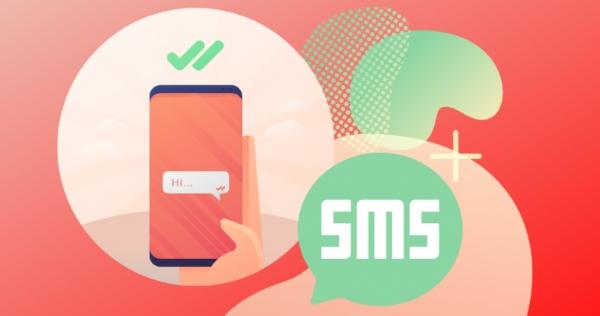


Unlike normal text messages that are based on cellular networks, mobile data is enabled to allow you send and receive the chat messages through Wi-Fi networks or mobile data connections.
Besides sending text-based messages, you can now share multimedia inputs; including videos, photos, audio, locations and document attachments.
Additionally, the tool displays your read receipts, online status indicators, and cross-platform compatibility which permits you to continue your chats and conversations on another OS.
Besides the decreasing cost of data packages, you could opt to use text messages like the instant messaging apps which have remarkably progressed to become easier to use.
What is a text message on Android?
SMS (Short Message Service) and MMS (Multimedia Messaging Service) on Android refer to the traditional method of communication that utilizes cellular networks.
When you have text messaging, you simply send short messages using the default messaging app preinstalled on your Android device.
These messages are in turn sent over the wireless network of the provider which gives you an ability to text any type of operating system or any mobile phone user, within any specific network providers.
Text messages can be referred to as the messages in a plain text, however, MMS is like a shortened version of Multimedia Message Service that bring up the basic multimedia such as photo, video and so on.
Moreover, the texting function on Android is available seamlessly to everyone and is an awesome decision for times Internet connection is not available or you want to use a simple plan.
Get alerts when kids talk about adult content and set up complete and safe online guidance.
Chat vs text message on Android
What is the difference between chat and text messages on Android
Android users have two primary messaging options: text (SMS/MMS) and internet-based chat messages.
Although the primary aim of both is to send and receive messages, there are some similarities and differences between them.
Similarities between Chat and text message on Android:
They enable you to send and receive messages on your Android device.
Both of them endorse the sending of text-based communication.
Both are used to message individuals or groups.
Differences between chat and text message on Android:
Network: Text messages use cellular networks (2G/3G/4G) for transmission, but chat messages are based on an internet connection (Wi-Fi or mobile data).
Multimedia Support: More commonly, SMS is used for text messaging, whereas MMS permits low-content multimedia like images and videos. The messaging platform is rich in multimedia functionality by allowing high-definition photos, videos, documents, audio files, etc.
Features: Texting handles the key functions, while chat apps include additional features such as reading receipts, typing indicators, online status, group messaging, and cross-platform support.
Compatibility: Messaging via SMS can be done between mobile users irrespective of the device or the carrier. Chat messages are app-centric and, therefore, these are not common across all apps.
Cost: Messages will be charged depending on your plan and carrier of choice. Text messages are normally free and are provided via your internet data or Wi-Fi.
Reliability: Messaging is more reliable, being based on dedicated cellular networks designed for messaging. The reliability of chat messages depends on your internet connection and the infrastructure of the chat app.
Is it safe to use chat?
Chat is safe especially when you use caution in referral, selection and revealing of personal information.
You can compare this to the real world and avoid talking to strangers you don’t know, like your address, phone number, or passcode, because they can cause a problem.
Exercise vigilance when you are chatting to ensure you use only credible chatting platforms. Avoid falling prey to any sneaky or tricky links or money requests.
As well, have you considered that to learn those who will be there for you, you might have to make few adjustments?
Chatting might be your best activity online, aside from the messaging with your friends and family, provided that you use it wisely.
Should kids use chat or text?
Parents will be on the alert when in selecting proper communication media for their children according to the age.
Text messaging can be appropriate to teens who have sound judgment to distinguish the complexity of online communication and without who are able to use different devices with competence.
Chat applications, such as those developed for kids, can be the places providing a secure area guarded by parents all around.
But you must understand that supervision is a must because it will assist us to secure the online world.
In particular, the child’s maturity, the context of the communication tool, and parental supervision should be among the core aspects of making the right decision.
Why does my phone say chat message instead of text message?
In case you use a messaging app that supports RCS, your phone screen may display “chat message” instead of “text message.”
RCS is a newer communication protocol that brings better features than SMS, for example, message read receipt, typing indicators, higher-quality media sharing, and group chats.
An RCS message is normally called a “chat message” to distinguish it from a normal text message sent via SMS.
How to change chat messages to text messages?
If your device shows the word “chat message” in place of the word “text message,” it probably uses a messaging protocol called Rich Communication Services (RCS).
To switch back to traditional text messaging (SMS), here’s how:
Launch your messenger.
Check Settings. This is usually replaced by three dots or lines in the upper-right or upper-left corner of the app.
In the settings section, look for “Chat Features” and click on it.
Scrolling through the “Chat features” menu, you should notice “Enable chat features.” Turn this option off.
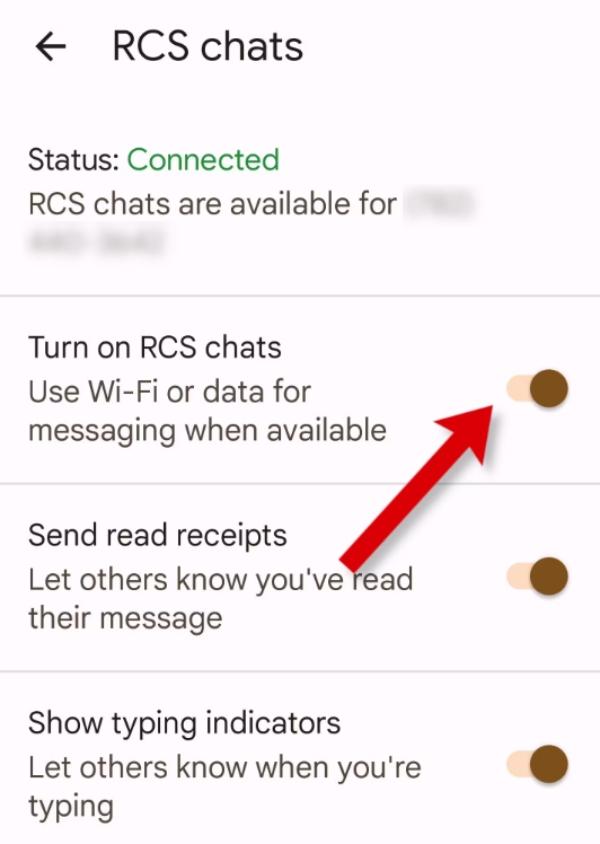


Disabling the chat feature on your messaging app will revert to the traditional SMS text messaging using RCS.
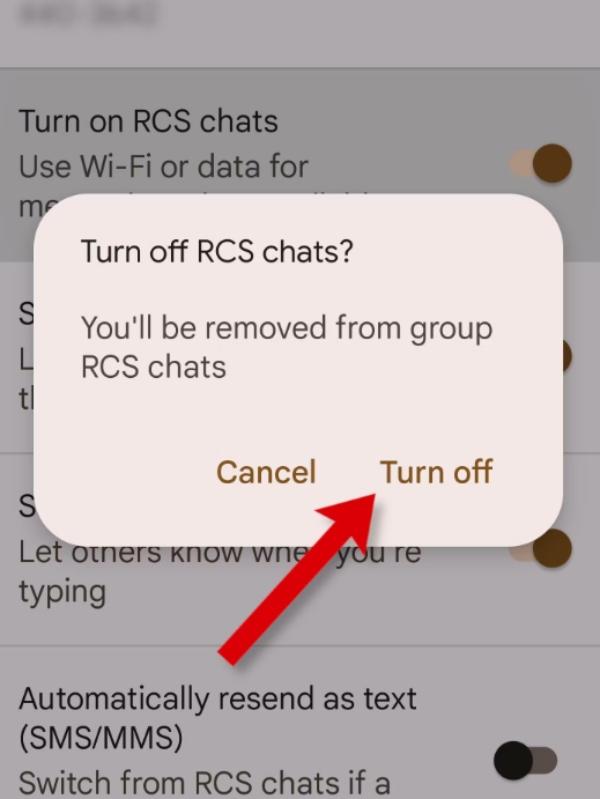


How to turn off chat messages?
To turn off chat messages and revert to traditional text messaging, you can follow these steps:
Launch the Messages app on your phone.
Click on the profile icon on the right of the search field. This may be represented as your profile picture or initials.



In the menu that appears, go to “Messages settings.”
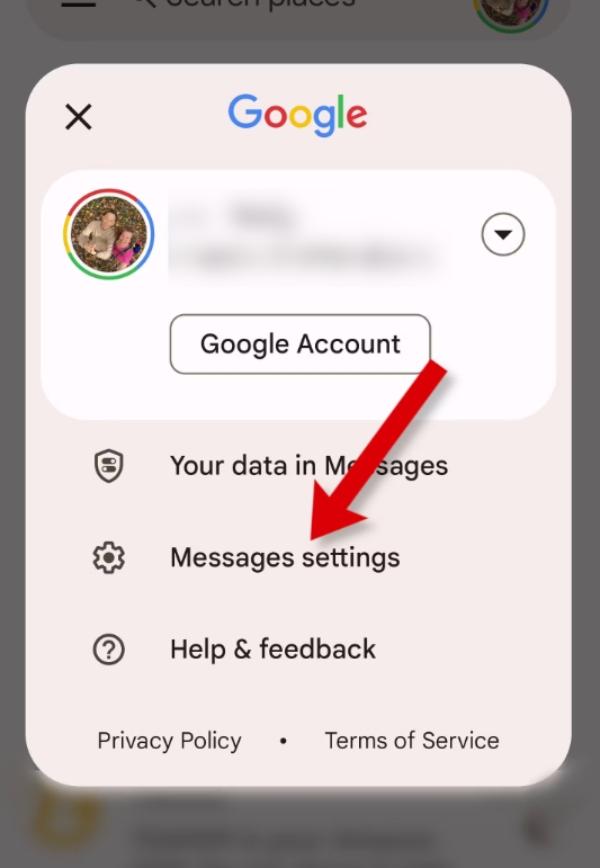


Identify “chat features” under settings.
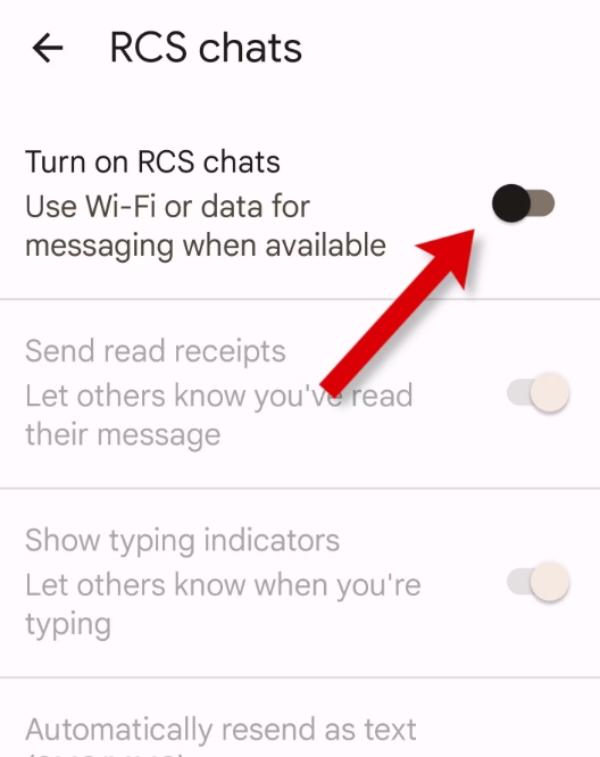


Switch off the “Enable chat features.”
How do you protect your kids from risky chat messages and text messages?
To shield your children from dangerous chat and text messages, use FlashGet Kids, a parental control app that was designed to protect children’s online communications.
Here’s how FlashGet Kids can help:
Blocking and Whitelisting:
FlashGet Kids allows you to block any or all unwanted apps or numbers from your child via chat or text message.
To access this feature in FlashGet Kids, follow the following steps:
Go to “Usage Limits” > Choose if you want to “Disable All Apps” or “Forbid New Apps” to block all applications or newly installed applications.
If you don’t want your children to use that app on their phones, you could go to the option ‘Screen Time Limits‘ > ‘Add limits.’ You would next select ‘Available Time Limits’ > Save.
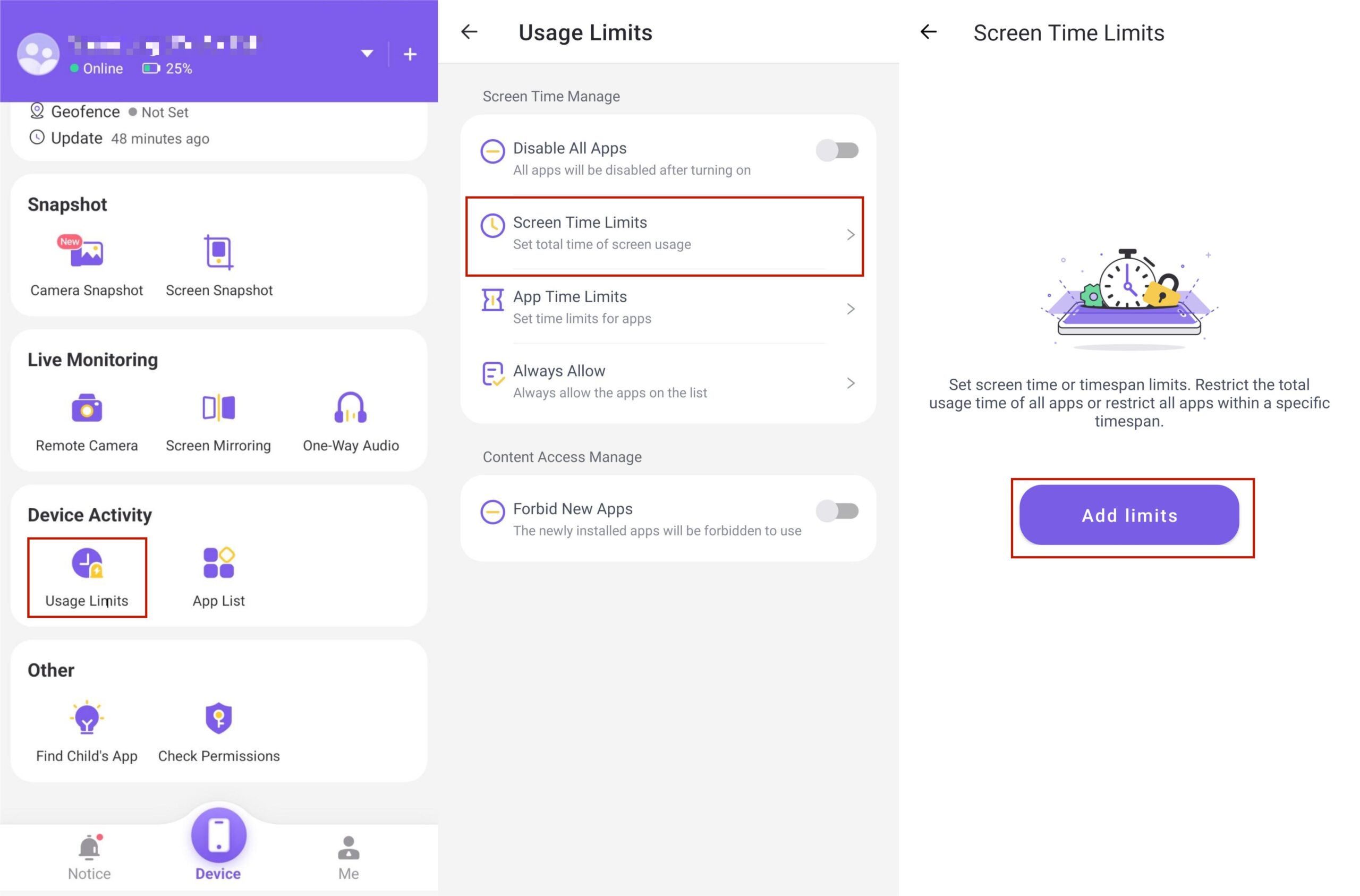


Monitoring and Alerts:
The app scans your child’s texts and chats in real time and notifies you when there is a danger in the conversations or contacts.
This makes you react immediately and solve issues as they happen. To access this feature in FlashGet Kids, follow the following steps:
Open the Dashboard and Live Monitoring. Tap “Screen Mirroring” then “Continue.” You will now be able to see your child’s screen.
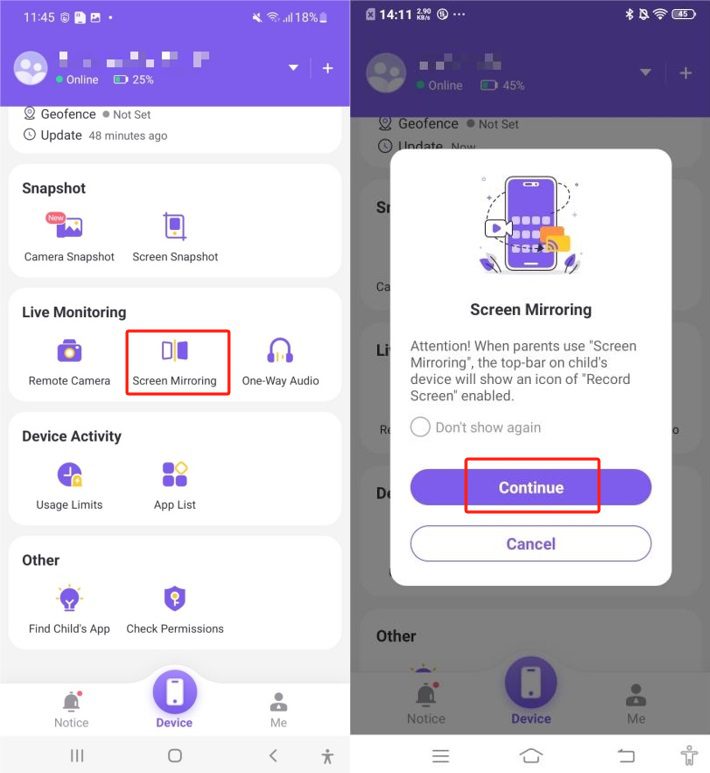


Go to “Remote Camera” and click on “Continue. It will bring you the current environment your child is in.
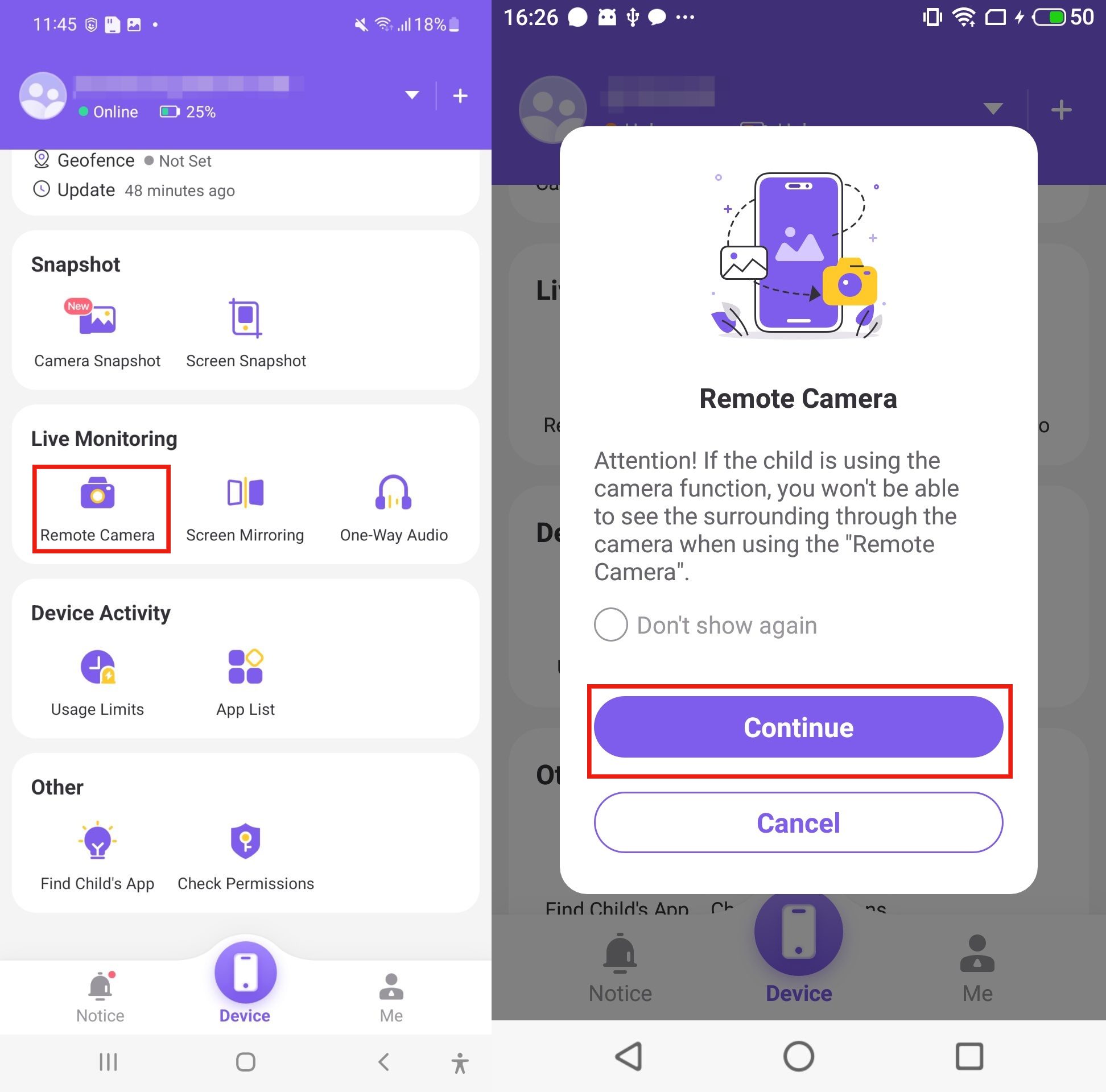


Now go to “One-way Audio” > ” Continue” > “Record.” and you can listen to how a child listens to her surroundings.
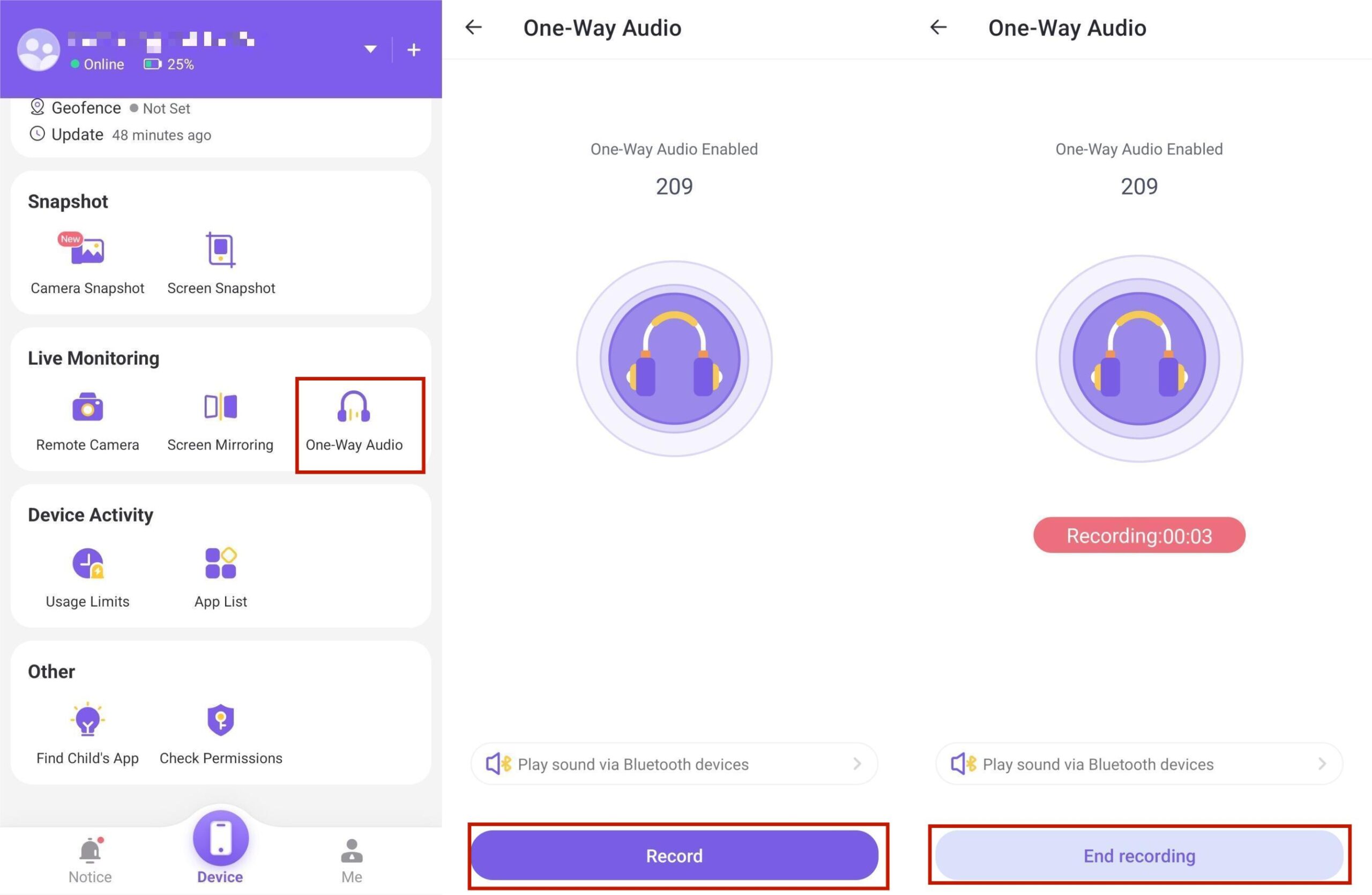


Go to “Notice,” and tap “Notifications” to see what push and messages they have receive on their phone.
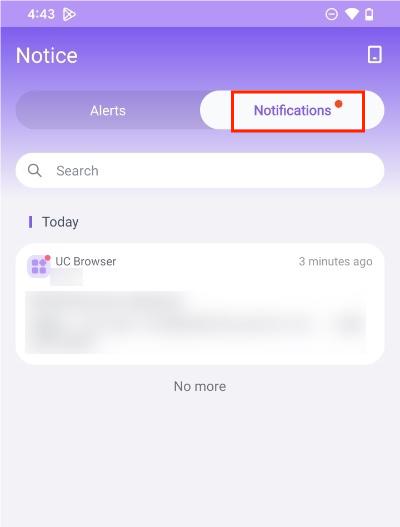


FAQs
What is the safest form of messaging?
The manner of the safest messaging can be dependent on personal judgement which is expansive/ open to interpretation and depends on certain influences and preferences. Choose Apps with end to end encryption and safe from data breaches.
Is Google Chat private and secure?
Google Chat has the security protocol called TLS for the data in transit. Also, for data at rest Google Chat uses the TLS protocol too. However all data is not protected by end-to-end encryption and, as a result, may be accessed by Google.
Which is more secure, texting or email?
Either way, whether by file sharing or instant messaging, the protocol and practice both have appropriate security if done correctly. Because texting makes use of end-to-end encryption, email security is demonstrated by the data handling of secure servers and encryption policies.

